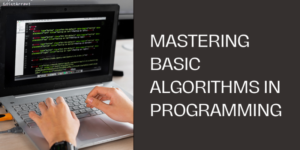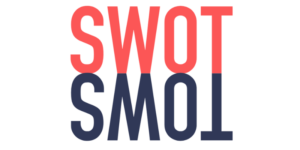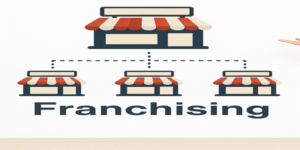Learning through reflection is increasingly recognised as an essential part of modern pedagogy, professional development, and lifelong learning. Reflection is more than simply recalling events; it involves critical thinking, self-awareness, and transformative learning that allows individuals to evaluate experiences, extract lessons, and improve future performance. As Moon (2004) explains, reflective practice enables learners to construct meaning from experience, thus bridging the gap between theory and practice.
Understanding Reflective Learning
At its core, reflective learning encourages individuals to pause, analyse, and evaluate their experiences. It is not a passive process but an active construction of knowledge. For example, a student nurse reflecting on a challenging patient interaction might ask: What went well? What could have been improved? What emotions did I experience, and why? Such questioning builds deeper understanding and strengthens professional competence (Paterson & Chapman, 2013).
According to Moon (2006), reflective learning can be facilitated through structured tools such as learning journals. These journals promote self-expression, metacognition, and critical engagement with experiences, transforming surface-level observations into higher-order thinking.
Theoretical Frameworks of Reflection
Several key theories help explain how reflection works in learning:
1.0 Kolb’s Experiential Learning Cycle
Kolb (1984) proposed a four-stage model:
- Concrete Experience – engaging in a task or situation.
- Reflective Observation – thinking critically about what happened.
- Abstract Conceptualisation – drawing lessons or forming new theories.
- Active Experimentation – applying insights to future actions.
This cycle demonstrates how experience becomes learning through reflection. For example, a business student completing a group project may reflect on communication challenges (Observation), link them to teamwork theories (Conceptualisation), and apply new strategies in the next project (Experimentation).
2.0 Gibbs’ Reflective Cycle
Gibbs (1988) developed a more detailed six-stage process, widely used in professional education:
- Description
- Feelings
- Evaluation
- Analysis
- Conclusion
- Action Plan
This structured approach helps learners unpack emotions and experiences systematically, which is particularly useful in healthcare and teaching contexts (Sow, Rasiah & Er, 2025).
3.0 Schön’s Reflection-in-Action and On-Action
Schön (1983) introduced two dimensions:
- Reflection-in-action: thinking critically while performing an activity.
- Reflection-on-action: analysing past experiences after they occur.
For instance, a teacher might adapt a lesson in the moment (reflection-in-action) or later consider how classroom management strategies could be improved (reflection-on-action).
Together, these models highlight reflection as both real-time problem-solving and post-event analysis, enhancing adaptability.
Benefits of Reflective Learning
Research consistently shows that reflective practice fosters deeper learning and professional growth:
- Improved Self-Awareness: Reflection helps learners recognise strengths, weaknesses, and biases (Bubnys & Žydžiūnaitė, 2010).
- Enhanced Critical Thinking: By questioning assumptions, learners move from surface to transformative learning (Mezirow, 1991).
- Professional Competence: In healthcare and education, reflective cycles improve clinical judgement and teaching effectiveness (Paterson & Chapman, 2013; Masharipova, 2025).
- Adaptability: Reflection promotes lifelong learning, enabling professionals to respond effectively to new challenges (Threlfall, 2023).
Methods of Reflective Practice
There are multiple ways reflection can be integrated into learning:
- Individual Reflection: Journals, portfolios, or digital blogs encourage self-directed analysis (Moon, 2006).
- Group Reflection: Peer discussions and debriefing sessions enhance collaborative learning (Balducci & Sultana, 2024).
- Creative Reflection: Storytelling and role-play allow learners to engage in imaginative reconstruction of experience (Tomkins, 2009).
For example, a group of medical students might use Gibbs’ cycle after a simulated patient consultation to analyse both technical and emotional aspects, resulting in holistic learning.
Challenges and Critiques
While reflection is widely praised, it is not without limitations:
- Superficial Reflection: Learners may stay at a descriptive level without engaging in critical analysis (Harrison, Short & Roberts, 2003).
- Time Constraints: Professional fields such as medicine often limit the time available for structured reflection (Sow, Rasiah & Er, 2025).
- Assessment Issues: Measuring reflection in education can be problematic, as it involves subjective interpretation (Gibbons, 2015).
These challenges suggest that scaffolding, training, and supportive feedback are essential to cultivate meaningful reflection.
Reflection in Professional Practice
Reflection is particularly valuable in education, healthcare, and management:
- In Education: Teachers use reflection to adapt pedagogy and understand student needs. Reflection journals in teacher training encourage deeper insights into classroom dynamics (Threlfall, 2023).
- In Healthcare: Nursing and medical education rely heavily on Gibbs’ and Kolb’s cycles to support safe, evidence-based practice (Paterson & Chapman, 2013).
- In Business and Management: Reflective leadership encourages ethical decision-making and adaptability in fast-changing contexts (Kuzmina & Moran, 2024).
For instance, a reflective manager may evaluate why a project failed, recognise gaps in communication, and develop strategies for improvement, thereby enhancing organisational learning.
Towards a Reflective Learning Culture
The future of education increasingly emphasises reflective learning as integral to personalised, student-centred pedagogy. Digital tools such as e-portfolios and reflective apps now make structured reflection more accessible (Agomo, 2025). Creating a culture of reflection—where questioning, feedback, and self-evaluation are embedded in daily routines—encourages learners to see mistakes as opportunities for growth rather than failures.
In sum, learning through reflection transforms experiences into meaningful knowledge and skills. By drawing on frameworks such as Kolb’s experiential cycle, Gibbs’ reflective model, and Schön’s reflection-in/on-action, learners can systematically evaluate and improve their practice. Reflection not only deepens understanding but also develops resilience, adaptability, and critical thinking—qualities essential for both professional success and lifelong learning.
Thus, a reflective approach represents not just a better learning experience, but a transformative pathway that empowers individuals to continuously grow, adapt, and thrive.
References
Balducci, B. P. & Sultana, K. (2024). Analysing modes of reflection in experiential learning: a sociocultural perspective on student peer editing. SN Social Sciences, 4(2), 1–19. https://doi.org/10.1007/s43545-024-00937-2
Bubnys, R. & Žydžiūnaitė, V. (2010). Reflective learning models in the context of higher education. Problems of Education in the 21st Century, 21, 58–70. Link
Gibbons, J. (2015). Oh the irony! A reflective report on the assessment of reflective reports. The Law Teacher, 49(1), 94–108.
Gibbs, G. (1988). Learning by Doing: A Guide to Teaching and Learning Methods. Oxford: Oxford Polytechnic.
Harrison, M., Short, C. & Roberts, C. (2003). Reflecting on reflective learning: The case of geography. Journal of Geography in Higher Education, 27(2), 133–152.
Kolb, D. (1984). Experiential Learning: Experience as the Source of Learning and Development. Englewood Cliffs, NJ: Prentice Hall.
Kuzmina, K. & Moran, J. (2024). Reflection by design: Embedding reflective practice into the student learning journey. In Education with Human-Centred Design. Routledge.
Masharipova, F. (2025). Fostering reflective practice: A pathway to effective teaching and professional growth. Jurnal Pendidikan Bahasa Inggris, 10(1), 45–60.
Mezirow, J. (1991). Transformative Dimensions of Adult Learning. San Francisco: Jossey-Bass.
Moon, J. A. (2004). A Handbook of Reflective and Experiential Learning: Theory and Practice. London: Routledge.
Moon, J. A. (2006). Learning Journals: A Handbook for Reflective Practice and Professional Development. London: Routledge.
Paterson, C. & Chapman, J. (2013). Enhancing skills of critical reflection to evidence learning. Physical Therapy in Sport, 14(3), 133–138.
Schön, D. (1983). The Reflective Practitioner: How Professionals Think in Action. New York: Basic Books.
Sow, C. F., Rasiah, S. & Er, H. M. (2025). A critical exploration of theoretical frameworks for reflective learning. Medical Science Educator, 35(1), 67–78.
Threlfall, S. J. (2023). Doing reflection justice. Fusion Magazine UK.









